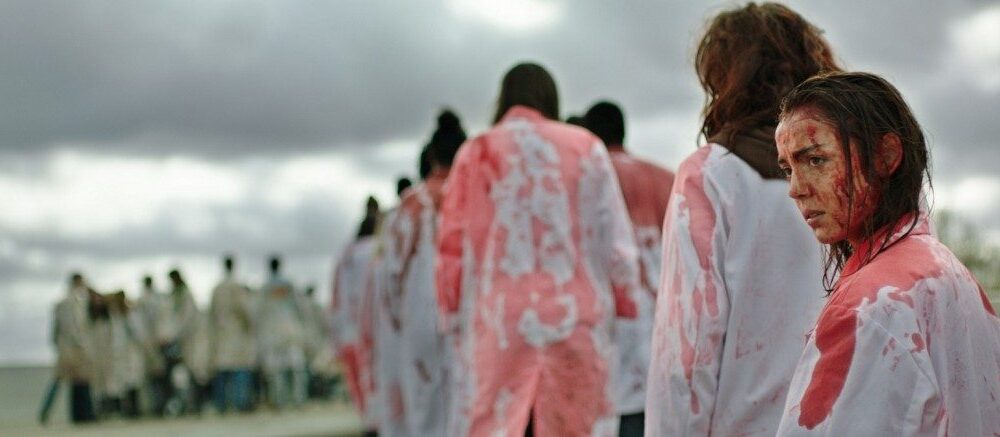Mild spoilers ahead for Raw and Saint Maud
With weak plot lines, underdeveloped characters, and often cliché moralistic endings—such as the least-likely-to-survive character ending up as the final girl—slasher films serve one purpose: To disgust. Films like the cult classic The Texas Chainsaw Massacre and constant rehashings of Evil Dead feature brutal amputations that could make even the most stoic person sick to their stomach. The scope of disgust in these films, however, appeals mainly to our base senses to elicit emotional responses from the audience.
Beyond fear of a possible intruder, which Open House and the Strangers franchise can drum up, slashers do not inspire contemplations of social and political issues, such as women’s rights and religion. Though few would displace slasher films in the horror cosmos, many movie-goers find their body horror gratuitous and pointless. For me, the gore is gratuitous because it is pointless. But body horror should not be interpreted nor deployed in a vacuum––films like Raw and Saint Maud elevate horror from superfluous gore and story-telling to drama that evokes both sensory responses and social reflection from viewers.
Julia Ducournau’s acclaimed film Raw (2016) sees Justine, a staunch vegetarian sheltered from the taste of meat by her overbearing parents, slowly develop a taste for human flesh once she moves away for veterinarian school. While the film misleads viewers by placing Justine’s descent into cannibalism as the central plotline, Raw is a woman’s coming-of-age story at its core. The appalling images of cannibalism—complete with blood, hair, and all—portray the grotesqueness and shame of embodying womanhood. Scenes of sexual exploration usually preface the cannibalistic scenes in the film. Ducournau combines images of cannibalism and sex as both fundamental acts of the flesh. The raw or unrefined act of sex reinforces our presiding animalistic instincts, which women are often conditioned to repress. Raw leverages gore to encapsulate the horror that bodies induce, especially in periods of exploration and discovery.
A revered A24 film, Saint Maud (2019) provides complex commentary on religion through modes of bodily suffering. The titular character, Maud, takes up a post as a live-in nurse after experiencing a religious awakening. Maud’s patient Amanda, a terminally ill atheist, presents signs of illness which Maud sees as the affliction of the patient’s misguided soul. Illness and death are the most gripping types of body horror because no one can evade the effects of aging and sickness. In an attempt to regain control over the inescapable reality of mortality, humans moralize pain and death. Maud believes the patient’s physical suffering on Earth simply foretells her eternal suffering after death. Relying on this model of correlation between pain and suffering, director Rose Glass creates a self-conscious paradox of Christian theology, as Maud practices mortification of the flesh to achieve salvation and part with suffering. Maud’s appalling treatment of her own body in the name of God posits pain as inescapably real and God’s distant, disembodied voice as comparably illusive; religion cannot be substantiated in the same way that physical pain can. Though Glass takes a critical position on religion, she uses Maud’s horrible death to demonstrate the crucial importance of suffering to Christian theology.
Horror derives its merit as a genre from its inclusions of other genres, such as drama or comedy. Horror can be funny in a morbid way, as in Shyamalan’s The Visit, or emotionally charged, as in Kent’s The Babadook. Unlike drama and comedy, horror has the potential to affect audiences on a sensory and emotional level through disturbing presentations of the body. Many other movies live up to the standards of Raw and Saint Maud in terms of using body horror to make important claims about how the human body grapples with women’s adolescence and religious piety. Ducournau’s Titane, Mirabella-Davis’s Swallow, and Brandon Cronenberg’s Antiviral access themes such as fame, domestic life, disordered eating, and women’s sexuality. I encourage you to give horror another try this Halloween and embrace the power of the body.








